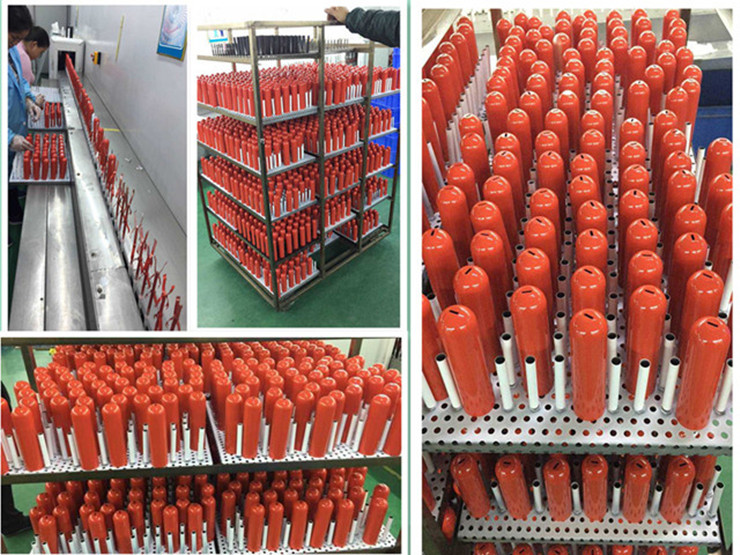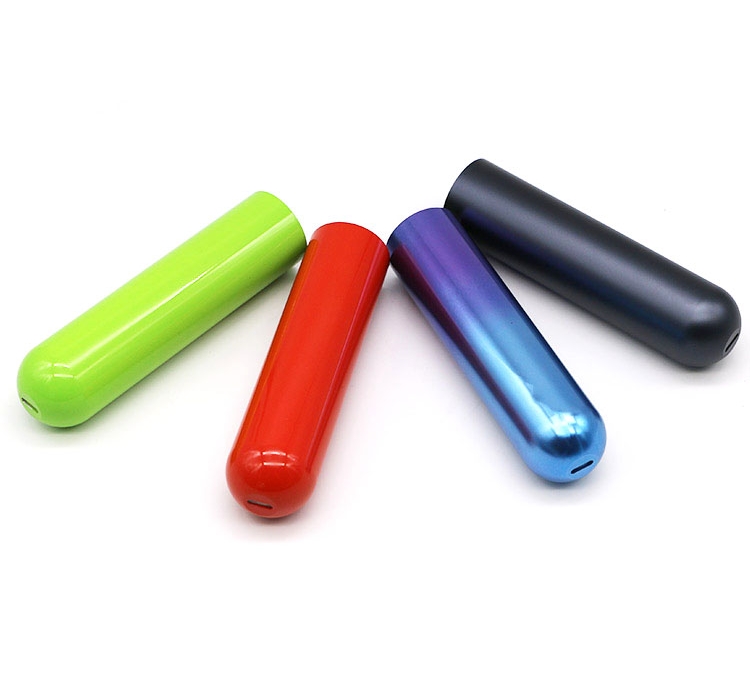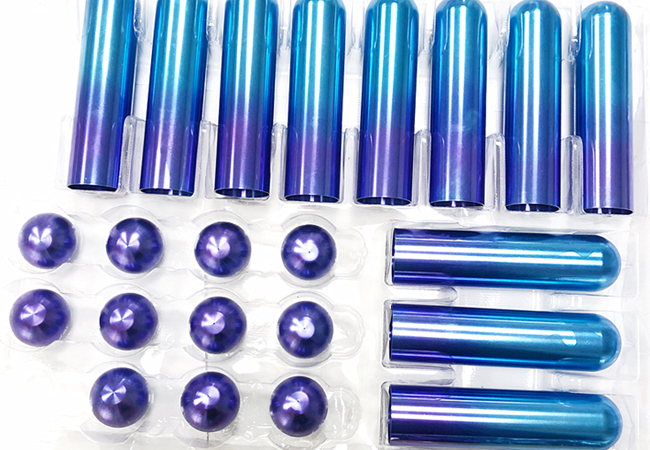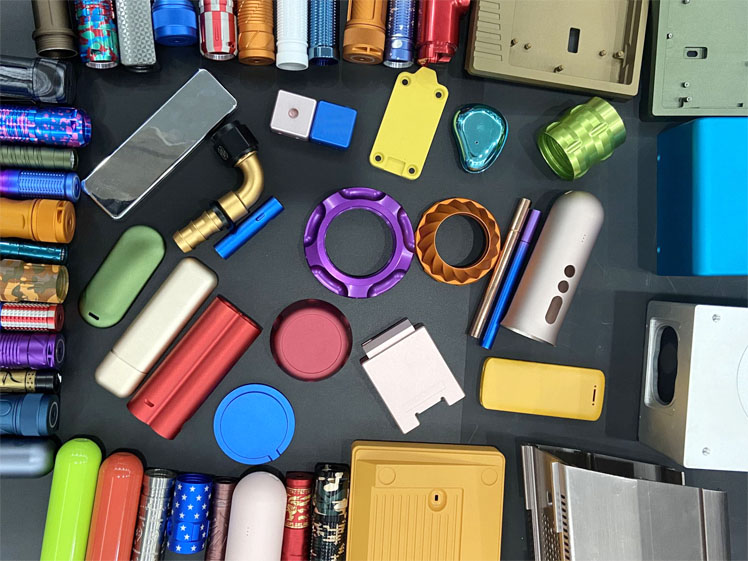Why does Aluminum Material Need to Be Anodized?
Aluminum is one of the most versatile materials used in industries ranging from aerospace to consumer electronics, thanks to its light weight, strength, and malleability. However, aluminum in its natural state is prone to corrosion, scratches, and wear. To address these issues, anodizing aluminum is an essential process. Anodized aluminum offers improved corrosion resistance, enhanced durability, and an aesthetic finish, making it ideal for use in critical industries, including CNC machining, aerospace, and automotive sectors.
In this article, we will delve into why aluminum needs anodizing, the process itself, and how it benefits industries that rely on precision parts, especially CNC-machined components.
What is Anodized Aluminum?
Anodized aluminum refers to aluminum that has undergone an electrochemical process known as anodization. During this process, the aluminum surface is treated in an electrolyte solution to form a durable, corrosion-resistant oxide layer. This oxide layer is thicker than the naturally occurring one, providing enhanced protection against environmental damage and wear. The anodization process is highly popular in CNC machining for producing parts that require both precision and a robust finish.
The process also allows the aluminum to absorb various dyes, resulting in a wide range of anodized aluminum colors, from matte finishes to glossy effects, depending on the industrial requirements.
Note: If you want to know more about Anodized Aluminum, you can read the following article:
Everything You Need to Know About Anodized Aluminum Colors
Aluminum Hard Anodizing: Characteristics and Applications
How to Anodize Aluminum?
Anodizing is an electrochemical process that enhances the natural oxide layer on aluminum surfaces, making them more durable, corrosion-resistant, and aesthetically appealing. The anodized aluminum surface can also be dyed, making it a popular choice in industries like aerospace, automotive, and electronics. Here’s the aluminum anodizing process:
1. Preparation of Aluminum Surface
The first step in the anodizing aluminum process is to prepare the aluminum surface. The aluminum part needs to be thoroughly cleaned to remove any dirt, grease, or oil that could interfere with the anodizing process. This is typically done using alkaline or acid-based cleaners. After cleaning, the part is rinsed with water to ensure there are no residual cleaning agents left on the surface. A clean surface is crucial for achieving a uniform and high-quality anodized finish.
2. Etching
In some cases, an etching step is included before anodizing. This step involves submerging the aluminum in a solution of sodium hydroxide to create a matte finish. Etching helps remove any surface imperfections and impurities, leaving behind a smoother surface for anodizing. It also improves the adhesion of the anodized layer. After etching, the aluminum part is rinsed thoroughly to remove any remaining etching solution, preparing it for the anodizing process.
3. Anodizing Process
The actual anodizing process begins by submerging the cleaned aluminum part into an electrolyte bath, typically sulfuric acid. The acid bath serves as the conductive medium through which the electrochemical reaction occurs. A direct current is passed through the bath, with the aluminum part acting as the anode. This causes oxygen to combine with the aluminum surface, creating a thicker, more durable oxide layer. The thickness of the anodized layer is controlled by adjusting the voltage and duration of the process. Higher voltage and longer processing times result in a thicker oxide layer, which enhances the aluminum’s durability and corrosion resistance.
4. Coloring
If you want to add color to the anodized aluminum parts, the part can be dyed while it is still in its porous state. This is done after the anodizing process, when the aluminum surface is still porous and can absorb the dye. The dye permeates the oxide layer, allowing for a range of vibrant colors. This step is especially common in industries like automotive or aerospace, where aesthetic appeal is important. Once dyed, the aluminum part is sealed by immersing it in boiling water or a nickel acetate solution to close the pores and lock in the color. Sealing also enhances the aluminum’s corrosion resistance and improves the durability of the finish.
5. Sealing
The sealing process is essential to the anodizing process as it further enhances the corrosion resistance of the aluminum. After anodizing and dyeing, the part is submerged in a sealing bath, usually containing boiling water or a nickel acetate solution. This step closes the pores of the anodized surface, making the aluminum more resistant to wear and tear. It also helps to ensure that the color added during the dyeing process stays intact for a longer period. Sealing is crucial for ensuring the longevity and durability of the anodized surface, especially in harsh environments.
6. Final Inspection
Once the anodizing and sealing processes are complete, the aluminum part undergoes a final inspection. This inspection ensures that the anodized finish is uniform, the color is consistent, and the surface has the necessary durability and corrosion resistance. The part is checked for any defects or imperfections that could affect its performance or appearance. Final inspection ensures that the anodized aluminum parts meet quality standards and are ready for use in their respective applications.
How Do You Anodize Aluminum?
The anodization process for aluminum involves several steps:
Cleaning: First, the aluminum part must be thoroughly cleaned. This step removes any contaminants such as oils, dirt, and grease to ensure the anodizing process adheres correctly.
Anodizing: The aluminum is then submerged in an electrolyte bath, and a direct current is applied. This electrical current causes the aluminum to form a thicker oxide layer on its surface. The thickness of the oxide layer can be controlled by adjusting the voltage and time spent in the electrolyte solution.
Coloring: After anodization, aluminum can be dyed in a range of colors. Anodized aluminum color options include rich hues like gold, black, or vibrant red, offering aesthetic flexibility for industries such as CNC manufacturing where appearance is as important as function.
Sealing: To complete the process, the anodized aluminum is sealed, locking in the dye and further increasing corrosion resistance. This step involves immersing the anodized aluminum in boiling water or another sealing solution to close the pores on the oxide layer.
What Other Equipment Do I Need for the Process?
Anodizing aluminum requires several pieces of specialized equipment, especially in CNC machining and manufacturing environments:
1. Anodizing Tank
The anodizing tank holds an electrolyte solution where aluminum parts are submerged to undergo the anodization process. The tank’s size must accommodate the parts, and the electrolyte solution must be kept at a specific temperature for optimal results.
2. Power Supply
A power supply is necessary to provide a direct current for the anodizing process. The power applied affects the thickness and quality of the oxide layer. Consistent current ensures uniform anodization, especially for CNC machining parts.
3. Rinse Tanks
Rinse tanks are used to clean the aluminum parts before and after anodizing. They prevent contamination during the process and ensure the aluminum parts remain clean, which is vital in CNC machining for precision finishes.
4. Dyeing Station
If a colored finish is required, a dyeing station is used. The anodized parts are submerged in dye to achieve the desired color. This process is commonly used for CNC-machined parts where aesthetics are important.
5. Sealing Equipment
Sealing equipment ensures the anodized aluminum’s protective oxide layer is closed, enhancing its durability. It prevents corrosion and ensures the anodized parts maintain their performance, which is crucial in CNC machining applications.
6. Temperature and pH Control Systems
Proper temperature and pH control systems ensure the electrolyte solution stays within optimal ranges. This prevents uneven anodization and ensures consistent, high-quality results for CNC-machined parts.
7. Filtration Systems
Filtration systems remove contaminants from the electrolyte solution to maintain cleanliness. This ensures a smooth, uniform finish, essential for high-precision CNC machining applications.
8. Ventilation Systems
Ventilation systems expel harmful fumes released during anodizing, ensuring worker safety and maintaining a clean working environment. Proper ventilation is essential in CNC machining areas where anodizing is part of the finishing process.
Anodized Aluminum vs Aluminum
When comparing anodized aluminum to regular aluminum, the differences in their properties are significant. Anodized aluminum undergoes an electrochemical process that enhances its natural oxide layer, offering improved corrosion resistance, durability, and aesthetic flexibility. Regular aluminum, while lightweight and versatile, lacks the protective oxide layer and is more vulnerable to environmental wear. Below is a detailed comparison highlighting the key differences between these two materials:
| Property | Aluminum | Anodized Aluminum |
|---|---|---|
| Corrosion Resistance | Low | High |
| Appearance | Shiny, metallic | Can be matte, glossy, or colored |
| Durability | Susceptible to scratches | Scratch-resistant, harder surface |
| Color Variety | Limited | Wide range of vibrant colors |
| Maintenance | Frequent cleaning required | Low-maintenance, easy to clean |
What Are the Advantages and Disadvantages of Anodized Aluminum?
Anodized aluminum is widely used in industries such as aerospace, automotive, and CNC machining because of its enhanced properties, which are achieved through the anodization process. The advantages of anodizing aluminum make it an excellent choice for applications that require both durability and aesthetic flexibility. However, like any manufacturing process, anodizing has its limitations and challenges. Below, we outline the key advantages and disadvantages of anodized aluminum:
Advantages:
- Corrosion Resistance
Anodized aluminum is highly resistant to corrosion. The anodization process creates a thick, protective oxide layer that shields the metal from environmental elements such as moisture, salt, and chemicals. This makes it ideal for use in industries like aerospace, automotive, and CNC manufacturing, where exposure to harsh conditions is common. - Durability
The oxide layer created during anodization is incredibly tough. It enhances the aluminum’s resistance to scratches, wear, and other physical damage. This makes anodized aluminum a superior choice for high-durability applications such as machined parts and electronic housings that require long-lasting performance. - Aesthetic Flexibility
Anodized aluminum allows for various finishes, ranging from vibrant colors to matte effects. This provides significant design flexibility for products such as mobile phone casings, architectural panels, and other consumer goods that require both durability and an attractive finish. The anodization process also helps maintain a sleek and uniform look across large production runs. - Environmental Sustainability
The anodization process is environmentally friendly, as it does not involve harmful solvents or chemicals. Unlike traditional paint applications, which release volatile organic compounds (VOCs), anodizing is a cleaner, safer option. This makes it a preferred choice for industries striving to reduce their environmental impact, especially those involved in high-precision manufacturing and sustainable production.
Disadvantages:
- Cost
The anodization process can be more expensive than other metal treatments. The need for specialized equipment and expertise increases production costs, particularly for small batch operations. This can be a challenge for smaller CNC machining companies looking to keep costs down while offering high-quality products. - Color Limitations
While anodized aluminum can be colored, the range of available colors is somewhat limited compared to other materials like plastic. The colors are achieved through dyes or natural anodization, but they may not be as vibrant or diverse as plastic coatings, which can affect the aesthetic flexibility for certain products.
- Complexity
The anodization process is not simple and requires technical expertise. It involves a precise balance of voltage, temperature, and solution chemistry to achieve the desired results. This complexity makes it difficult for smaller operations to handle, especially if they lack access to specialized equipment or skilled personnel.
Where is Anodized Aluminum Used?
Anodized aluminum has a wide array of applications across industries due to its enhanced durability, aesthetic appeal, and corrosion resistance. Some key uses include:
CNC Machining: In CNC machining, anodized aluminum is highly favored for creating precision parts. The anodization process enhances the material’s resistance to wear, scratches, and corrosion, making it an ideal choice for components that undergo regular mechanical stress. Its enhanced hardness and the ability to maintain a clean surface make it perfect for industries such as aerospace, automotive, and electronics, where precision and performance are critical.
Automotive: The automotive industry extensively uses anodized aluminum for various parts, including wheels, bumpers, engine components, and trim accents. Anodized aluminum is ideal for these applications because it offers excellent aesthetic appeal, is lightweight, and is highly resistant to corrosion from exposure to road salts, water, and other environmental elements. The vibrant colors and protective properties make anodized aluminum perfect for both functional and decorative automotive parts.
Aerospace: Anodized aluminum plays a critical role in the aerospace industry, where lightweight materials with high resistance to environmental conditions are crucial. Aerospace components such as aircraft bodies, landing gear, and engine parts are often made from anodized aluminum due to its resistance to corrosion, which is essential for durability in harsh environments. Anodized aluminum also ensures that the parts remain lightweight without compromising strength or performance.
Consumer Electronics: Anodized aluminum is widely used in consumer electronics, including products like mobile phones, laptops, tablets, and smartwatches. The anodized finish offers an attractive sleek look, protects devices from scratches, and prevents corrosion due to the oxide layer formed during anodization. This makes anodized aluminum a popular choice for enclosures, casings, and other parts of high-end electronic devices, giving them both aesthetic appeal and increased durability.
Medical Equipment: In the medical industry, anodized aluminum is utilized for making medical equipment like surgical instruments, diagnostic tools, and medical devices. Its corrosion resistance is essential in environments where cleanliness and hygiene are critical. Additionally, anodized aluminum is easy to clean and sterilize, making it a preferred choice for devices that require strict sanitation procedures. The non-reactive nature of anodized aluminum also ensures that it does not contaminate sensitive materials during medical procedures.
How to Tell if Aluminum is Anodized?
If you’re unsure whether a piece of aluminum is anodized, there are several methods to help you identify it:
1. Visual Inspection
The first step is to visually inspect the aluminum’s surface. Anodized aluminum typically has a matte or satin finish, which is different from the shiny, metallic appearance of untreated aluminum. The anodization process can also give the aluminum a slight color tint, depending on the dye used during the anodizing process. You may see shades ranging from bronze and gold to black or even vibrant colors like red and blue. This color is part of the anodized surface and is not a coating that can peel off like paint. The surface texture of anodized aluminum can vary from smooth to slightly textured.
2. Scratch Test
One of the easiest ways to test if aluminum is anodized is by performing a scratch test. Anodized aluminum is significantly harder than untreated aluminum due to the durable oxide layer created during the anodization process. If you scratch the surface with a metal object, anodized aluminum will resist scratching and show minimal to no damage. On the other hand, untreated aluminum will easily show visible marks or dents. Keep in mind that this test may not be definitive on highly polished anodized surfaces, but it still offers an initial indication.
3. Acid Test
The acid test can be another reliable method to determine if aluminum has been anodized. Apply a small amount of an acidic solution, like vinegar or a mild acid, to the aluminum. Anodized aluminum will not react to the acid, and the surface will remain unchanged. However, untreated aluminum may tarnish or corrode when exposed to acid. The lack of reaction indicates the presence of the protective oxide layer that forms during anodization, which is resistant to corrosion and acidic substances.
4. Weight Check
Anodized aluminum may feel slightly heavier compared to untreated aluminum due to the oxide layer’s thickness. The process adds a small amount of weight to the material, but this difference is typically negligible in most applications. It can be helpful when comparing similar parts, but this method alone is not a foolproof indicator.
5. Light Reflection Test
The light reflection test involves looking at the aluminum under different lighting conditions. Anodized aluminum will often exhibit a matte or satin reflection, while untreated aluminum reflects light with a higher shine and gloss. The anodized surface diffuses light, whereas the untreated surface reflects it in a sharper way.
VMT’s Aluminum Anodizing Services
At VMT, we not only provide excellent anodizing services for aluminum parts, but also cover sheet metal manufacturing and 3D printing technology. Our precision machining process combined with advanced anodizing technology ensures that your aluminum parts are not only durable and corrosion-resistant, but also beautiful. With strong CNC machining capabilities, a professional anodizing team, and advanced sheet metal manufacturing and 3D printing technology, we promise that each part can meet the highest standards of performance and appearance. Contact us today to get a free quote and start your custom project!
What Happens if You Don’t Anodize Aluminum?
Without anodizing, aluminum is more vulnerable to corrosion and physical wear. The natural oxide layer on untreated aluminum is thin and can easily be damaged by environmental factors like water, salt, and air. Anodized aluminum helps prevent oxidation, maintains its appearance, and ensures longer-lasting performance in industries like CNC machining.
In Conclusion
Anodizing aluminum is a critical process that enhances the material’s durability, aesthetic appeal, and corrosion resistance. Whether used in CNC machining, aerospace, or automotive applications, anodized aluminum provides long-lasting performance in even the harshest environments. By understanding the anodization process, industries can make informed decisions on utilizing aluminum for parts that require strength, precision, and an attractive finish.
Frequently Asked Questions About Anodized Aluminum
What is Anodized Metal?
Anodized metal is metal that has undergone an electrochemical process called anodization, which thickens the natural oxide layer on its surface. This process enhances corrosion resistance, durability, and surface hardness, and can also improve paint adhesion. Anodizing is commonly used on aluminum to create a more protective and aesthetic finish.
How is Coil Anodized Aluminum Different?
Coil anodized aluminum is aluminum that is anodized in a continuous roll or coil form, typically used in large-scale manufacturing. This process allows for consistent, uniform coating across long sheets of aluminum, making it ideal for architectural applications, such as facades, and offering superior protection against corrosion, UV damage, and weathering.
Why is it Necessary to Anodize Aluminium to Make it Corrosion Resistant?
Anodizing creates a thicker, more protective oxide layer on aluminum, which naturally resists corrosion. Without anodization, aluminum is prone to oxidation and can degrade quickly when exposed to moisture and air. The anodized layer acts as a barrier, protecting the metal from rust and environmental damage, enhancing its longevity and appearance.
What Anodized Aluminum Colors are Available?
Anodized aluminum is available in a range of colors, including clear, bronze, black, gold, and red. The color is achieved through the anodizing process, where dyes are added to the oxide layer or the metal’s natural color is enhanced. The color options depend on the anodizing technique and the type of dye used.
Does Anodized Aluminum Wear Off?
Anodized aluminum is highly durable and resistant to wear. However, the anodized layer can wear off over time due to abrasion, scratching, or extreme conditions. If the anodizing process is done correctly, the finish should not peel or fade easily. However, in cases of heavy mechanical wear or poor maintenance, the anodized surface can degrade. Generally, anodized aluminum can last 10-20 years, depending on the thickness of the anodized layer and its quality.
How to Anodize Aluminum Black?
To anodize aluminum black, follow these steps:
Prepare the Aluminum: Clean the aluminum part thoroughly to remove dirt, oil, and impurities using an alkaline solution.
Anodizing Process: Submerge the aluminum in an electrolytic bath with sulfuric acid, applying an electric current to form a semi-porous oxide layer.
Dye the Aluminum: After anodizing, immerse the part in a black dye. This dye can be organic, inorganic, or electrolytic, depending on the desired finish.
Seal the Surface: Finally, seal the anodized layer by submerging the part in hot water or a sealing solution to ensure the color stays intact.







